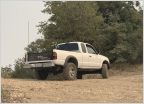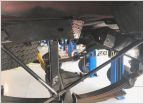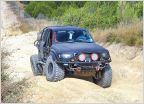-
Welcome to Tacoma World!
You are currently viewing as a guest! To get full-access, you need to register for a FREE account.
As a registered member, you’ll be able to:- Participate in all Tacoma discussion topics
- Communicate privately with other Tacoma owners from around the world
- Post your own photos in our Members Gallery
- Access all special features of the site
AdventureTaco - turbodb's build and adventures
Discussion in '1st Gen. Builds (1995-2004)' started by turbodb, Apr 4, 2017.
Page 229 of 281
Page 229 of 281


 Tanya the Toyota Tacoma - Cattywampus '04 Ext Cab
Tanya the Toyota Tacoma - Cattywampus '04 Ext Cab Allex95s Tacoma Build & Trips
Allex95s Tacoma Build & Trips Mid Atlantic TACO build
Mid Atlantic TACO build Kooks Mid Travel DC Build and BS Thread
Kooks Mid Travel DC Build and BS Thread Djm228's maintenance thread
Djm228's maintenance thread First Gen IFS with Duals
First Gen IFS with Duals






































